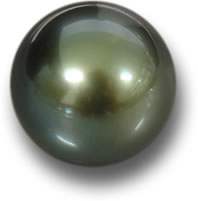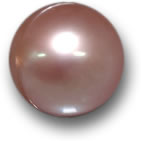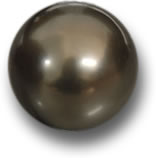|
|
Your Details
|
|
Your Details
|
Reviewed By Andreas Zabczyk
The Pearls of America Natural Fresh Water Pearl
Pearls have been hunted and fought over for as far back as history and fable can record. Due to the immaculate beauty and mesmerizing qualities of pearls, the Aztecs and Mayans believed they held magical powers; whilst in ancient Rome only rulers were deemed important enough to wear them. Pearls come in a fascinating range of shapes and sizes. Whilst round pearls command the highest prices in auction, wild pearls are rarely round, and many carry a soft colorization, from delicate pinks to more exotic black and brown hues; the color itself depending on the type of water and kind of mollusc it is housed in.  Fresh Water Pearl
Pearls are as delicate as their elusive splendor suggests. The pure organic nacre makes pearls vulnerable to extreme temperatures and acid, as well as being sensitive to both aridity and humidity. Additionally, pearls are not as firm as one may think, ranging between only 2.5 and 4.5 on the Mohs scale of hardness. With this in mind, it's important that those fortunate enough to own them always wear and store pearls with great care. The harvesting of natural pearls has been taking place for thousands of years, along the shores of the Red Sea, across the Indian Ocean, and the floor of the Persian Gulf. The culturing of pearls is also thought to go back as far as 13th century China, when Buddhist figures and symbols were placed in molluscs in order to create blister pearls. Today, saltwater pearls come predominantly from China and Japan, whereas freshwater pearls can be found throughout Europe in the rivers of France, Germany, Austria, Ireland and Scotland, and most interestingly, in the USA, along the Mississippi River. The Native Americans Natural Pearl from GemSelect
The Native Americans were the first to discover the freshwater pearls of the Mississippi, found in unionid mussels, as well as American mother of pearl, found along the South Atlantic Coast. The Native Americans took pride in their pearl harvesting, and the pearl became a symbol of tremendous beauty within their culture, not only as a form of ornamentation, which had a strong influence on their fashion and customs, but also as a reliable form of tender and trade. Once the colonial settlers in America discovered the overwhelming quantity of pearls in the southern rivers of the country, pearls quickly became one of the most heavily exported products to Europe. Eventually, America became one of the chief sources of freshwater pearls across the globe. Sadly, the rapid over-harvesting of America's pearl resources, and more recently, the invasion of the zebra mussel, has left the national rivers almost free of its stunning organic pearls, now rendering them a very rare, if not non-existent, natural treasure. John Latendresse and the Great Pearl Farms of TennesseeConsidered to be the father of U.S. pearl culturing, John Latendresse was a pioneer in the American pearl cultivation industry. He opened America's first pearl farm in 1963, in Tennessee. Latendresse was a man of extreme hard work, dedication and determination, and spent almost 30 years of his life experimenting in pearl cultivation, investing more time, effort and money into the field than any American before or since.  Pearl Shell From Tennessee
By the late 1970s, once his technology and cultivating system was established and working, Latendresse opened a further 4 freshwater pearl farms. Thereafter, his protégée, James Peach, opened up a 5th. Thus the backbone of the United States pearl cultivation industry was created, along with the formation of the American Pearl Company in Camden, Tennessee. Such was the success of local pearl cultivation that the pearl became the "state gem" of Tennessee.  Natural Freshwater Pearl
There are many subspecies of pearl mussel found in Tennessee's pearl farms, each with very charming and descriptive names, including the elephant ear, pistol grip, maple leaf, butterfly, pimple back, three-ridge pigtoe and the washboard mussel. Pearl cultivation is not a simple or fast process. First, pearl mussels are fished from the Tennessee River bed and then transported to the pearl farms. Once at the farms, cultivation is a long and delicate process, as the mussels are nucleated and then left for up to 5 years, with their health and conditions carefully and constantly monitored. Pearl divers are no longer required to comb the often fruitless, and sometimes dangerous, ocean floors, desperately hunting natural pearls. Once only seen in the possession of royalty, emperors and those of immense wealth, the discovery of pearl culturing, and moreover, the obsessive dedication of men like John Latendresse, has reshaped the journey of the pearl, making this once priceless, almost mythical gem, more accessible to the world, and creating a community of pearl lovers worldwide. |
